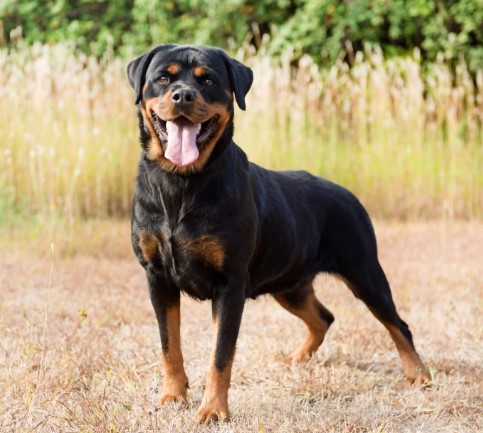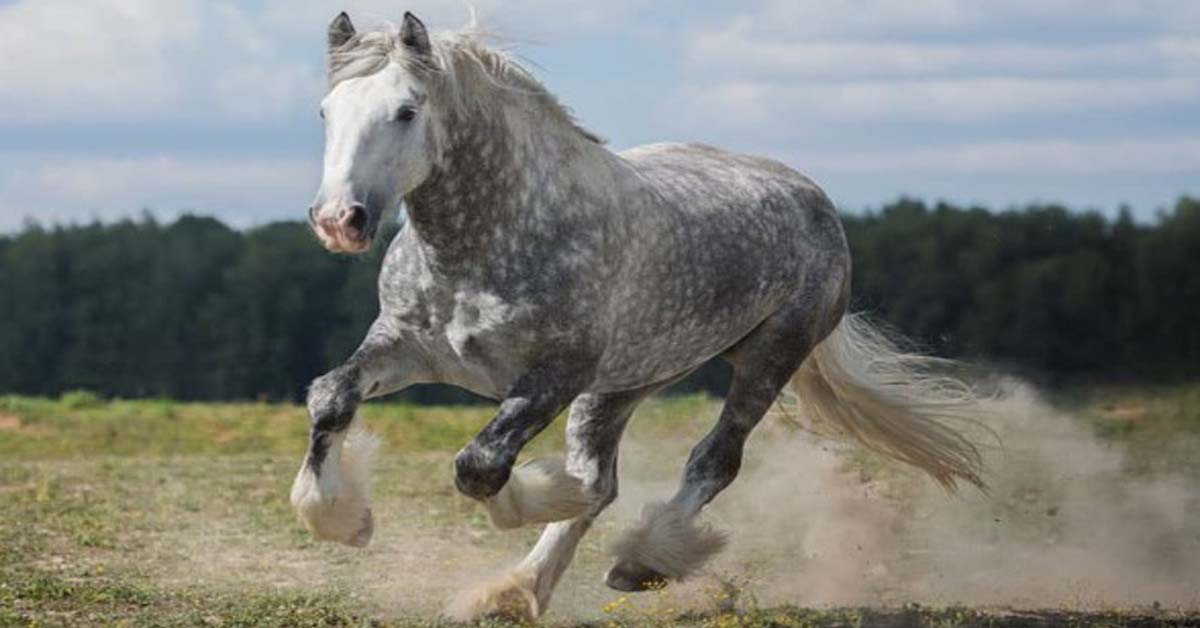The Cymric Cat is a domestic cat breed. Some cat registries categorize the Cymric as a semi-longhair variation of the Manx breed rather than a distinct breed. Besides fur length, both breeds share identical characteristics, and litters can include kittens of either type.
The name “Cymric” is derived from “Cymru,” an indigenous Welsh term for Wales, although the breed itself is not associated with Wales. The name was likely chosen to evoke the breed’s “Celtic” sound. The Manx lineage of the breed originated in the Isle of Man, although Canada asserts the development of the long-haired variant. Certain registries refer to the breed as Longhair Manx or similar names.
- ORIGIN: Isle of Man
- HEIGHT: 11″-14″
- WEIGHT: Up to 12 pounds
- LIFESPAN: Up to 15 years
- EYE COLOR: Amber, Copper, Green, Gold, Hazel, Orange, Yellow
Cymric Cat Breed Characteristics

The affectionate and charming Cymric is the long-haired variant of the tailless Manx cat. Beyond coat length, both share identical features, boasting solid bodies, rounded heads, well-spaced ears, and large, round eyes. The plush coat comes in diverse colors and patterns, including tabby, tortoiseshell, and calico.
The taillessness in the Cymric results from an autosomal recessive genetic mutation, a common phenomenon in cats. Apart from the absence of a tail, the Cymric, named after the Gaelic word for Wales, is recognized for its overall rounded appearance:
Its head, eyes, and rear end all exude a rounded aesthetic. It’s noteworthy that not all Cymrics are entirely tailless; some, known as rumpy, lack a tail, while others have up to three fused spines or even up to five smaller stumps that can be wiggled around. There are also those termed long, boasting a tail longer than a stump but shorter than the typical cat’s tail.
Weighing between seven to 13 pounds, the Cymric features a silky, medium-length double coat, available in various colors and patterns. Known for its gentle and playful nature, the Cymric often enjoys fetching or carrying toys. Exhibiting intelligence and dexterity, it can use its paws to access cabinets or open doors.
Affectionate towards humans, Cymric communicates with a sweet trilling voice. While some may shower all their love on one individual, others display affection towards the entire family, including children.
Despite the lack of a tail, the Cymric possesses a robust hindquarters, showcasing excellent jumping abilities even without a natural counterweight for balance. Observing its acceleration, sharp turns, and quick stops, one might liken it to a cat-shaped mini sports car.
Home
A Cymric is an ideal addition to any home where there are individuals ready to provide love, play, and care. Ensuring indoor living for this feline companion helps protect it from potential dangers such as traffic accidents, diseases transmitted by other cats, and encounters with other animals.
| Adaptability: 5 | Health Issues: 3 |
| Energy Level: 5 | Stranger Friendly: 3 |
| Child Friendly: 4 | Affectionate: 5 |
| Social Needs: 5 | Dog Friendly: 5 |
| Shedding Level: 5 | Intelligence: 5 |
| Grooming: 3 |

Cymric cat History
The Cymric is essentially a long-haired version of the Manx, one of the oldest known cat breeds surrounded by intriguing legends about its origin.
One captivating tale suggests that when Noah gathered animals onto the ark, the Manx cat was asleep. Upon awakening, the cat hurried to the ark, but Noah accidentally closed the door on its tail, leaving it tailless. Another legend connects the Manx to a ship from the Spanish Armada, which supposedly sank off the Isle of Man in 1588.
The more plausible origin traces back to trading ships between Phoenicia and Japan. Sailors might have acquired Japanese corkscrew-tailed cats for rodent control during their voyages, rather than importing an entirely new cat breed.
Notably, the first Manx champion, Bonhaki, gained fame in London around 1900. Manx breeding in the United States commenced in the early 1930s, with the first U.S. Manx Grand Champion recognized in 1951.
The Cymric made its debut in Canada during the 1960s. While some registries still refer to them as long-haired Manx, others have officially designated them as Cymric, a term derived from the Celtic word for Welsh.
Cymric Cat Appearance

The Cymric is a medium to large, muscular, and compact cat, with a weight ranging from seven to thirteen pounds. Characterized by a cabbage-shaped body, it exhibits an unusually rounded appearance.
With large and full eyes and widely spaced ears, Cymrics stands out. In contrast to the short hair of the parent Manx breed, the Cymric boasts medium-long, dense fur that contributes to a well-padded look on the main body, enhancing its rounded aesthetic. All colors and patterns accepted for the Manx are equally embraced in the Cymric.
Within the Cymric breed, four distinct tail types exist. The most esteemed cat show is the “Rumpie,” which is the sole show cat type in certain establishments. Rumpies are born entirely without a tail, often featuring a dimple at the base of the spine. Another type is the “Rumpy-Risers,” characterized by short tail knobs composed of one to three spines attached to the spine. “Stumpies” possess a short tail stump, about one-third the length of a typical tail. Lastly, “long-tailed” or “full-tailed” Cymrics have tails as long as or nearly as long as those of regular cats. The variety of tail types in a litter is unpredictable.
Cymric Cat Temperament
The Cymric is characterized by a gentle and playful nature. It is often fond of engaging in activities such as fetching or carrying toys. Displaying intelligence and dexterity, this cat can adeptly use its paws to access cabinets or open doors.
With an inclination towards human companionship, the Cymric communicates with a sweet trilling voice. Individual personalities vary, with some Cymrics directing all their affection towards a single person, while others exhibit warmth and affection towards the entire family, including children.
Cymric Cat Personality
Cymric cats are highly sociable creatures, displaying affection towards both people and other pets, including dogs. Similar to dogs, Cymrics can be taught tricks and are known for their playful nature.
Notably, this breed exhibits excellent compatibility with children, showcasing a gentle disposition and affectionate behavior. With a muscular build contributing to their powerful jumping ability, Cymrics often seek elevated perches, sometimes choosing to rest on the backs of their owners.
Recognized for their high intelligence, Cymrics are generally undemanding and can engage in self-entertainment when human or pet companionship is not readily available. One amusing form of self-amusement observed in this breed is their affinity for water, reminiscent of their Manx heritage, often seen engaging in playful water activities.
Cymric cat Health
Every cat has the potential to encounter health issues, much like humans are susceptible to hereditary diseases. Beware of breeders who assert that their breed is entirely free from health or genetic problems; such claims may be misleading or a sign of insufficient knowledge about the breed. Exercise caution and avoid breeders who don’t provide health guarantees for kittens, claim their breed is 100% healthy with no known issues, or assert that their kittens are uniquely immune to common health concerns.
The absence of a tail in Cymrics isn’t always innocuous. Some may have spinal cord defects leading to neurological symptoms like difficulty in defecation or urination. Most kittens with such issues are typically identified by six months of age and may necessitate euthanasia.
It’s prudent to delay bringing your kitten home until you’ve ensured it doesn’t suffer from these problems. Refrain from choosing kittens with mobility issues or an abnormal gait, and only consider breeders who offer a written health guarantee.
After bringing a new kitten into your home, you hold the key to shielding them from a prevalent health problem—obesity. Maintaining your Cymric at an optimal weight is the simplest method to safeguard its overall health. Utilize preventive measures to ensure a lifetime of well-being for your feline companion.

Cymric cat Care
Maintaining the Cymric’s coat is a straightforward task, requiring brushing or combing twice a week to eliminate dead hair and evenly distribute skin oils. Pay close attention to the rear end, ensuring no feces are adhered to the fur around the anus. Clean as needed to prevent any unpleasant odors on carpets or furniture.
Implement dental care by brushing the cat’s teeth to ward off periodontal disease. While daily dental hygiene is optimal, weekly brushing proves beneficial. For the eyes, gently wipe the corners with a soft, damp cloth to remove any discharge, using a separate section for each eye to prevent potential infection spread. Conduct weekly ear checks, and if they appear dirty, use a cotton ball or a soft, damp cloth with a 50-50 mixture of cider vinegar and warm water for cleaning. Avoid using cotton swabs, as they may harm the inner ear.
Maintaining a pristine litter box is crucial, given Cymric’s discerning bathroom habits.
Considering keeping the Cymric as an indoor-only cat is advisable to safeguard against diseases transmitted by other cats, potential attacks by dogs or coyotes, and various outdoor hazards, including traffic accidents. Additionally, outdoor Cymrics face the risk of being stolen due to their appealing appearance.
Best Food For Cymric Cat
- Hill’s Science Diet Adult Healthy Cuisine Roasted Chicken & Rice Medley Cat Food
- Hill’s Prescription Diet y/d Chicken Flavor Dry Cat Food
- Hill’s Science Diet Adult Chicken Recipe Cat Food
- Hill’s Science Diet Adult Liver & Chicken Entrée Cat Food
Cymric Cat Feeding
The prevalence of cat obesity is currently at its peak. Given the inherently round build of the Cymric, it becomes crucial to avoid overfeeding your cat. Maintaining a lean physique is essential to ward off weight-related health issues such as diabetes, heart disease, and arthritis.
Opt for a measured portion of cat food provided at regular meals, distributed two to three times a day. While it might be tempting to skip meals, doing so can result in constant snacking, contributing to weight gain. Consult with your veterinarian or breeder to determine the most suitable food for your Cymric.
Cymric Cat Grooming
The Cymric boasts a medium-length, dense, double coat that experiences moderate shedding. To maintain a shiny coat, it’s advisable to brush two or three times a week and, if the fur feels greasy or matted, consider occasional baths.
Regularly trim your Cymric’s nails to keep them short, and conduct periodic ear checks. If you observe any dirt or debris, use a cotton ball with a pet-safe cleaner to clean the ears.
Best Training For Cymric Cat
Due to its high intelligence, the Cymric is readily trainable. Beyond the inherent skill of opening doors with its paws, the cat can be taught various tricks, including retrieving items. With early training, it can even learn to walk on a leash.
Crucially, training the Cymric can establish respect for boundaries. Simple commands, such as not jumping on the counter or scratching furniture, are typically adhered to when provided with suitable alternatives.
Best Exercise For Cymric Cat
Cymric cats exhibit intelligence and playfulness, with some even displaying a penchant for bringing along toys. To ensure your Cymric stays active, encourage play with a diverse array of engaging toys and provide climbing opportunities such as feather sticks for chasing and cat towers for climbing. Given their people-oriented nature, Cymric cats may not thrive when left alone for extended periods.
Cymric Cat Adoption Center
The Cymric is a distinctive and uncommon breed. While it’s unusual to find one in a shelter or through a rescue group, it’s worth checking as some pedigree cats may end up in these situations due to changes in an owner’s life circumstances. Explore listings on Petfinder and Adopt-a-Pet.com to find available Cymrics; if not listed, try searching for Manx, as Cymric is essentially a long-haired Manx.
Regardless of where you acquire your Cymric, ensure there’s a well-defined contract with the seller, shelter, or rescue group outlining responsibilities on both sides. In states with “pet lemon laws,” make sure both parties understand their rights and remedies.
Whether it’s a kitten or an adult, promptly take your Cymric to the veterinarian after adoption. This initial visit allows the vet to identify any potential issues and collaborate with you to establish a preventive care plan, mitigating the risk of many health problems.
Cymric cat Video
See More Cat Breeds For Further Research
FAQs
Do Cymric Cats Possess Tails?
The Cymric is a long-haired iteration of the Manx cat, distinguished by its absence of a tail. Similar to the Manx, Cymric kittens may exhibit stumpy tails of varying lengths (classified as rumpy-risers, stumpies, and longies) or, in some cases, no tails at all (rumpy). Cymrics showcase a diverse range of colors and patterns.
What is the Size of Cymric Cats?
Cymrics are muscular, compact, medium to large cats, weighing between seven and thirteen pounds. They feature a distinctive cabbage body and an unusually rounded appearance, with large and full eyes and widely spaced ears.
How Much Does a Cymric Cat Cost?
The price of a purebred Cymric kitten can range from $500 to $800, depending on factors such as pedigree and breeder.
Are Cymric Cats Suitable as Pets?
Cymrics are known for their calm and sweet demeanor. Unfazed by their surroundings, they make affectionate companions and thoroughly enjoy interacting with people.












One thought on “Cymric Cat: 1 Of The Best Full Information For You…”